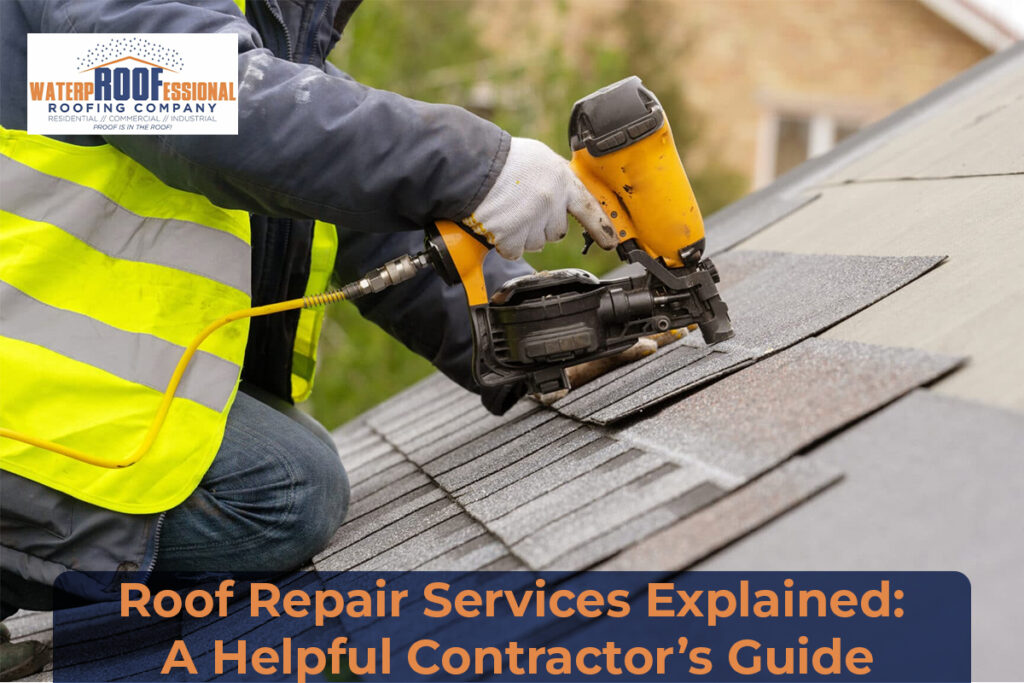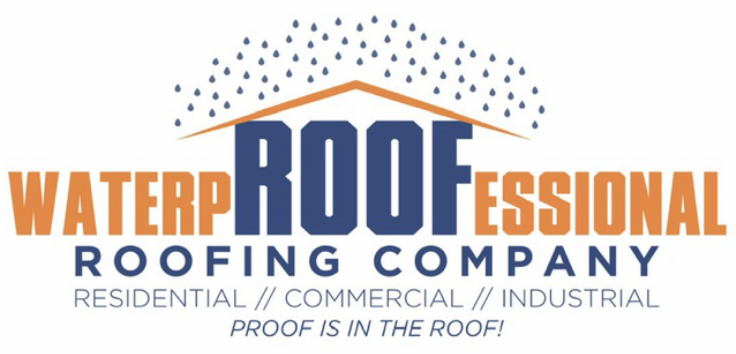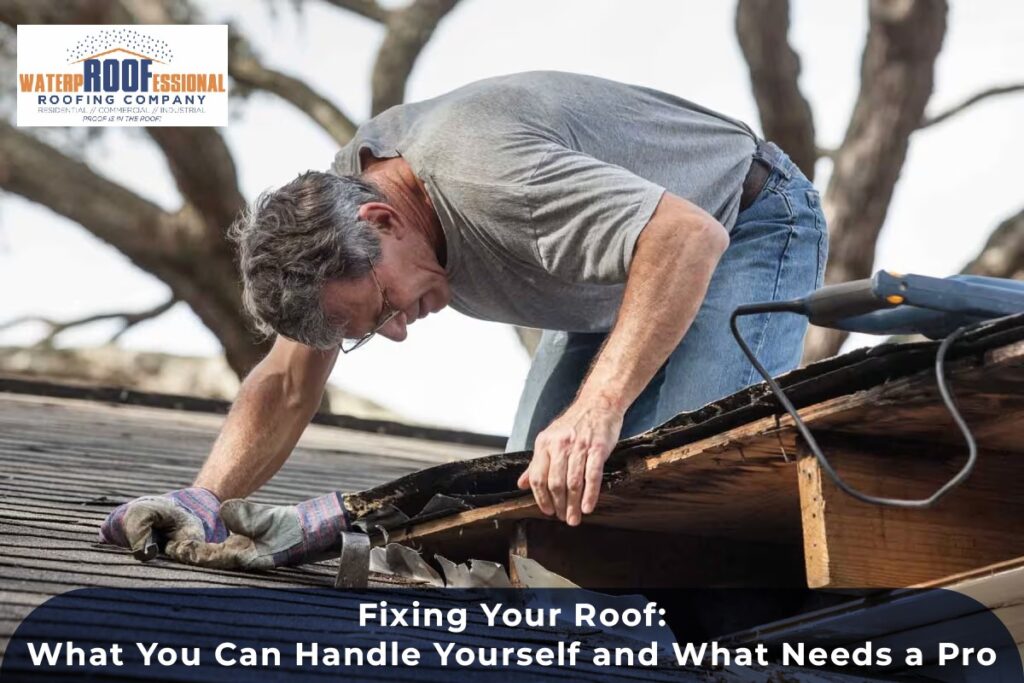A healthy roof is like the unsung hero of your home—silently protecting you from rain, sun, snow, and everything in between. But when things go south—say a leak after a storm or shingles flying off on a windy day—it’s time to act fast. That’s where roofing repair services come into play. Whether you’re a homeowner trying to understand the basics or a contractor seeking clear talking points for clients, this guide walks you through the essentials. From spotting red flags to choosing a reliable roof repair contractor, we’ve got you covered.
Knowing what to expect helps you make informed decisions, reduce long-term costs, and protect your investment. So let’s dig into what happens during a repair, the types of damage you might face, and how to handle them like a pro.

Signs Your Roof Needs Immediate Attention
You don’t have to be a roofing expert to spot trouble. A few warning signs can tell you when to call in the pros for a roof inspection.
1. Leaks or Water Stains
If you notice water spots on your ceiling or walls, you likely have a roof leak. This might seem minor, but even a small leak can lead to mold, rot, or structural damage.
2. Damaged or Missing Shingles
Look out for cracked, curled, or completely missing shingles. These are often the first to go after a storm and can leave your roof vulnerable to further damage.
Regular roof maintenance and inspections twice a year—especially after storms—can save you thousands in future roof leak repair costs.
Types of Roof Repairs You Should Know
Let’s break it down by severity. Understanding the different types of roofing repair services can help you explain or decide what your home actually needs.
Minor Repairs
These are your basic fixes—roof shingle repair, sealing small leaks, or replacing loose flashing. They’re quick, low-cost jobs that prevent bigger issues down the line.
Major Repairs
Think water damage, sagging sections, or long-term neglect. These often require replacing large portions of roofing material or structural fixes.
Emergency Roof Repair
A tree just fell on your roof? You’ll need immediate, temporary protection—like tarps—before permanent repairs can be made.
How a Roof Repair Contractor Approaches the Job
A professional doesn’t just slap on a patch and call it a day. Let’s walk through a typical repair process with a licensed roof repair contractor.
Step 1: Inspection and Diagnosis
Using modern tools—drones, moisture scanners, and even thermal imaging—your contractor identifies hidden issues beyond the visible damage.
Step 2: Estimate and Proposal
You’ll receive a detailed quote outlining labor, materials, and timeline. Always ask about warranty coverage.
Step 3: Roof Repair Execution
Depending on the damage, this might include roof flashing repair, shingle replacement, or reinforcing weakened areas.
Transparency, communication, and experience are what set a quality roof repair company apart from the rest.
Roof Materials and Their Impact on Repair Costs
The type of roofing material on your home heavily influences what kind of repair is needed and how much it’ll cost.
Asphalt Shingles
Most common and affordable. Repairs are usually simple and low-cost.
Metal Roofing
Durable but trickier to fix. Roof flashing repairs and panel replacements require specialized tools.
Tile or Slate
Beautiful but brittle. Cracks and breaks can be expensive to replace, and you’ll want a contractor experienced with these materials.
For more affordable installation options, see residential roof installation in Champaign, IL.
What Affects Roof Repair Costs?
Let’s talk numbers. The roof repair cost depends on several key factors:
- Extent of damage: A few missing shingles vs. major water intrusion.
- Labor rates in your area.
- Roof pitch and accessibility.
- Materials used.
- Emergency service fees.
If you’re unsure whether repair or replacement is smarter, check out our full service options including commercial roof installation in Champaign, IL.
Preventive Roof Maintenance: Your Best Long-Term Strategy
You can avoid most major issues with just a bit of TLC.
Clean Your Gutters
Clogged gutters cause water backup, which can rot your fascia and leak into your home.
Schedule Routine Inspections
Every spring and fall, or after heavy storms. A professional roof inspection identifies problems early.
Replace Damaged Shingles Quickly
Don’t wait until a single damaged shingle becomes a full-blown leak.
Finding the Right Roof Repair Company Near You
When searching for roof repair near me, don’t just go with the first name that pops up. Vet your options carefully.
Ask the Right Questions
- Are they licensed and insured?
- Do they specialize in your roof type?
- Do they offer free estimates and inspections?
Check Reviews and References
Look for contractors with consistently high ratings and happy clients.
We recommend Waterproofessional Roof Repair in Champaign, IL for high-quality, local roofing services.
Final Thoughts: Don’t Wait Until It’s Too Late
When it comes to your home, your roof is the frontline defense. Small issues can quickly escalate into costly disasters if ignored. Whether you’re dealing with a minor roof shingle repair or in need of emergency roof repair, acting early is key.
Work with a trusted roof repair company and prioritize regular roof maintenance to save time, stress, and money in the long run.
For expert help with all roofing concerns, from roof inspections to full roof repairs, trust Waterproofessional in Champaign, IL.
FAQs About Roof Repair Services
Q: How long does a roof repair typically take?
A: Most repairs take between 1 to 3 days, depending on the severity of the issue and weather conditions.
Q: What’s the average cost of minor roof repairs?
A: You can expect to pay anywhere from $150 to $600 for small repairs. Costs rise with labor, materials, and damage scope.
Q: Will my insurance cover roof repairs?
A: It depends. Insurance often covers storm-related damage but it won’t help with age-related wear and tear unless maintained regularly.
Q: Can I repair a roof leak myself?
A: Minor fixes like sealing a small crack are possible, but it’s always best to hire a roof repair contractor for a lasting solution.
Q: What’s the difference between roof patching and replacement?
A: Patching is a temporary fix for small issues. If the damage covers more than 30% of your roof, replacement is more cost-effective.



